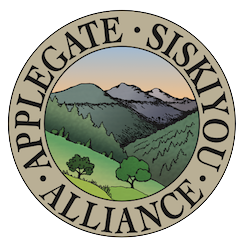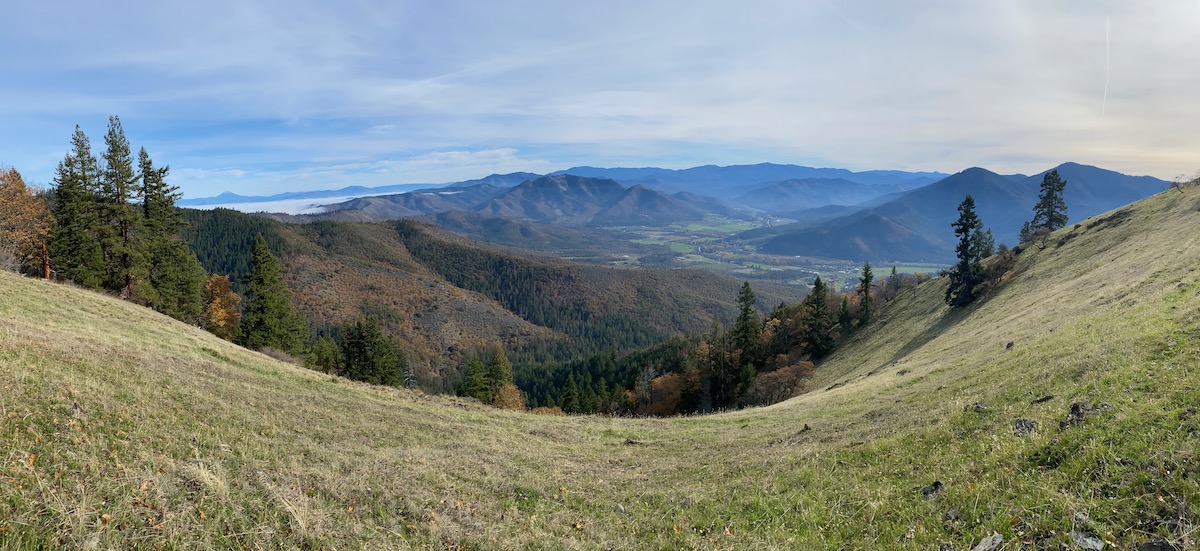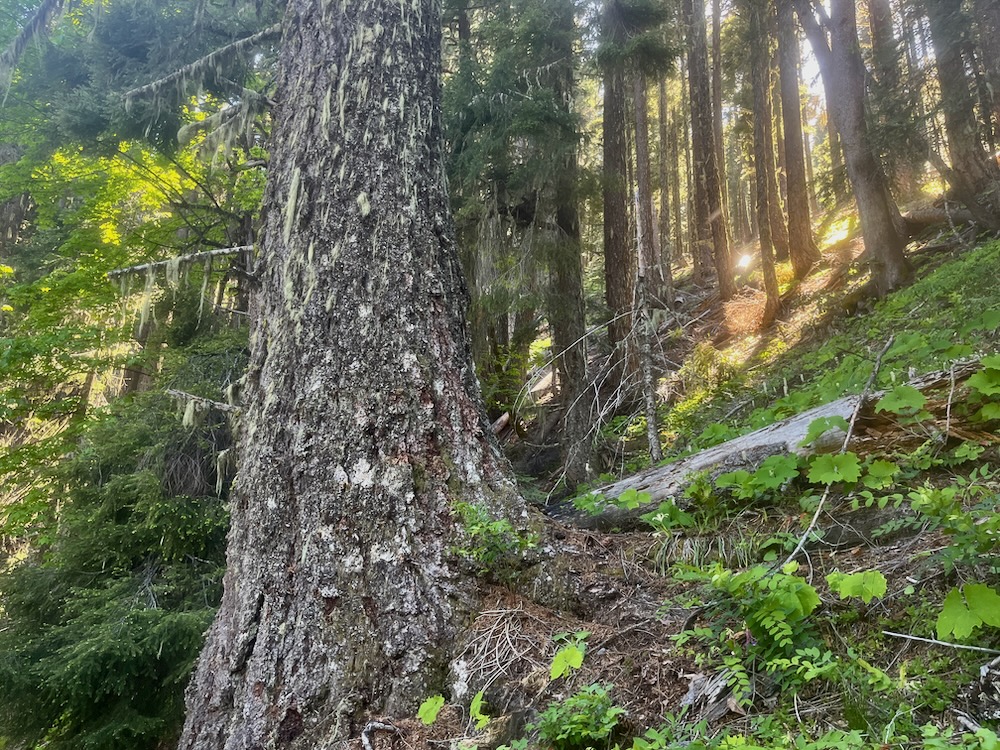
Rising above the pastoral Williams Valley, Grayback Mountain is the signature peak of the area and holds a special place in the hearts of many local residents. Reaching epic proportions in local lore and revered by those who live at the mountain’s base, Grayback Mountain and the vast wildlands to the south, the Kangaroo Inventoried Roadless Area, tie directly into the Red Buttes Wilderness Area at the headwaters of the Applegate River. A north-south spur ridge of the Siskiyou Crest, the “Grayback Range” also connects the forests of the Applegate Valley directly to the Siskiyou Crest and its world-class botanical diversity and habitat connectivity.
The Grayback Range also divides the Applegate from the Illinois River watershed and contains the last significant block of uncut, old-growth forest visible from the Williams Valley. As the wild, forested backdrop to the Williams area, Grayback Mountain is flanked by Big Sugarloaf Peak, a broad forested knob dropping steeply into the headwaters of the Williams Creek watershed.
Grayback Mountain is cherished by local communities for the clean, cold water it provides, the ancient forests it still supports, the wildlife it harbors, and for the scenic backdrop and views. In fact, as an acknowledgment of their love for the mountain, community members have fought for these forests, including large-scale civil disobedience protests and mass arrests at the Sugarloaf Timber Sale in 1995 on Forest Service land, where massive old growth trees over 400 years old were logged by Boise-Cascade timber company. This was followed by spirited campaigns to stop the China Left Timber Sale (on Forest Service lands) further south and west in the Grayback Range between 1996 and 1997. During this campaign activists from Williams and throughout southern Oregon blockaded forest roads and set up the Sucker Creek Free State, protesting for two years to stop, slow and ultimately cancel the timber sale after many of the units had been logged.
Following the Sucker Creek Free State, community activist fought off the Scattered Apples Timber Sale on BLM lands in the Williams Creek watershed, and most recently Applegate Siskiyou Alliance and other environmental organizations across the region successfully challenged the BLM’s Late Mungers and Penn Butte Timber Sales in Williams Creek’s western tributaries.
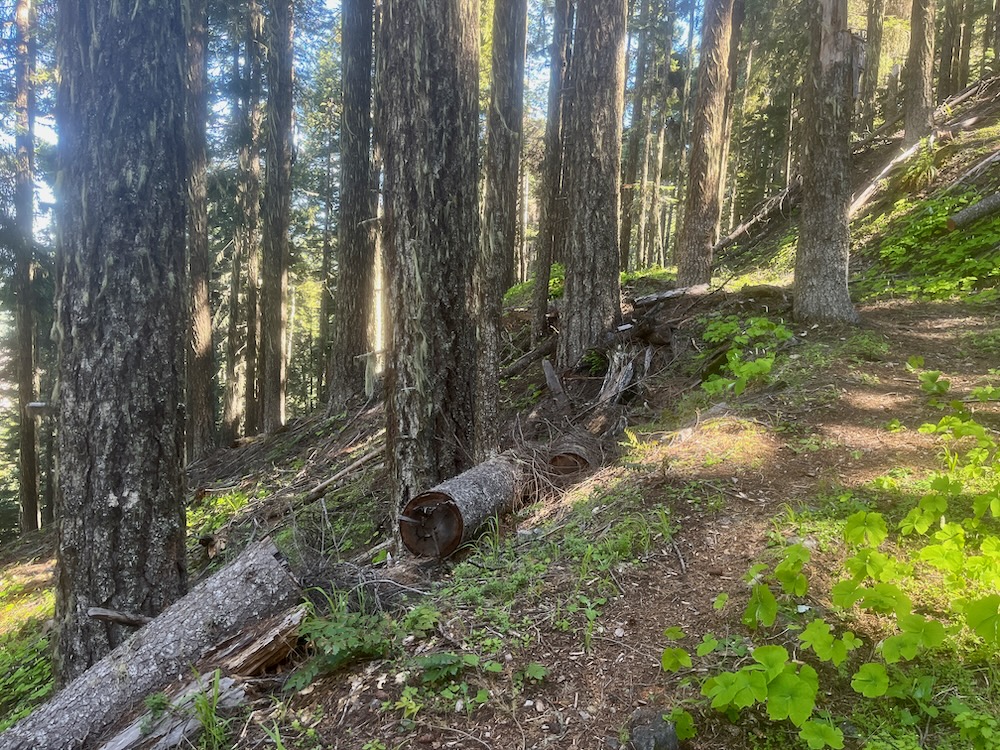
In another expression of their love for this place, residents in the Williams Valley spent over 15 years working as dedicated volunteers to build the Grayback Mountain Trail. After years of backbreaking labor, sweat, sore muscles, and BLM red tape, the Grayback Mountain Trail is now a community asset and one of the region’s most popular backcountry hiking trails. The trail traverses old-growth forests on the flanks of Big Sugarloaf Peak and in the upper reaches of Williams Creek that are now threatened with the BLM’s Cedar Flat Timber Sale.
The Cedar Flat Timber Sale extends across BLM lands at the headwaters of Williams Creek, including both the East and West Forks. It also contains old-growth logging units surrounding the Grayback Mountain Trail. Recently ASA, set out for upper Williams Creek to monitor BLM logging units in the area and are outraged, but not surprised by what we found.
The Cedar Flat Timber Sale targets some of the last old stands remaining in the Williams Creek watershed, including the headwaters of Rock Creek and Glade Fork on the productive north-facing slopes of Big Sugarloaf Peak. These units contain moist forest associations, including lush Douglas fir forests, Port Orford cedar stands, massive old pines, beautiful wide-branching hardwoods and forests carpeted in understory species more common in the coast range than the interior Siskiyou Mountains. At the eastern portion of Port Orford cedar’s range in Oregon, the area represents a wet pocket of coastal forest, a significant climate refuge, and a massive concentration of carbon stored in forest soils, trees, snags, and downed wood.
The BLM’s proposal includes 3,222 acres of potential commercial logging, including 2,493 acres of Late Successional Reserve (LSR) forest, set aside specifically to protect old forest habitat for the northern spotted owl and other forest dwelling species. The logging proposed is likely to include a mixture of heavy commercial logging, group selection logging, Riparian Reserve logging, new road construction, and the logging of large overstory trees that support complex old forest canopies, important wildlife habitat, and high levels of fire resilience.
Based on what we have found so far in the Cedar Flat Timber Sale units, we believe significant mature, late successional and old-growth forest will be targeted with damaging commercial logging prescriptions. We also believe the controversy this sale sparks will ignite opposition, outrage, and protest like the BLM has never seen before!
Rock Creek/Grayback Mountain Trail Units
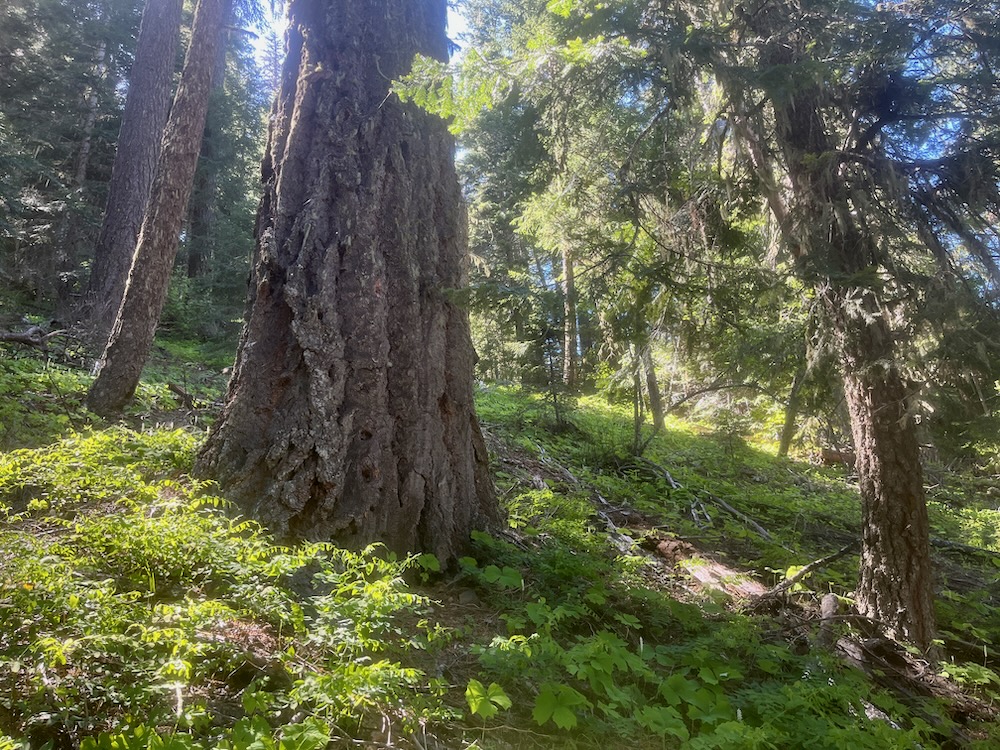
The so-called Cedar Flat Forest Management Project (i.e. timber sale) map provided with the recent scoping notice identifies a large sprawling “treatment area” in Section 29, below the summit of Big Sugarloaf Peak and at the edge of the Grayback Glades Research Natural Area (RNA). The proposed logging unit extends across the community built Grayback Mountain Trail and drops down the flank of the ridge into old-growth forests in both the headwaters of Rock Creek and the West Fork Williams Creek.
Although not technically inventoried as roadless by the BLM, these stands are contiguous with old-growth forests flanking Big Sugarloaf Peak in the vast Kangaroo Inventoried Roadless Area on adjacent Forest Service lands. The proposed treatment area includes large blocks of relatively moist old-growth forest, including ancient Douglas fir trees up to 4 and 5 feet diameter. Diverse, complex, and important for numerous old-growth species, including the northern spotted owl, pacific fisher and perhaps, even the coastal marten. These ancient, closed forests are also important to the surrounding communities for their scenic and recreational value.
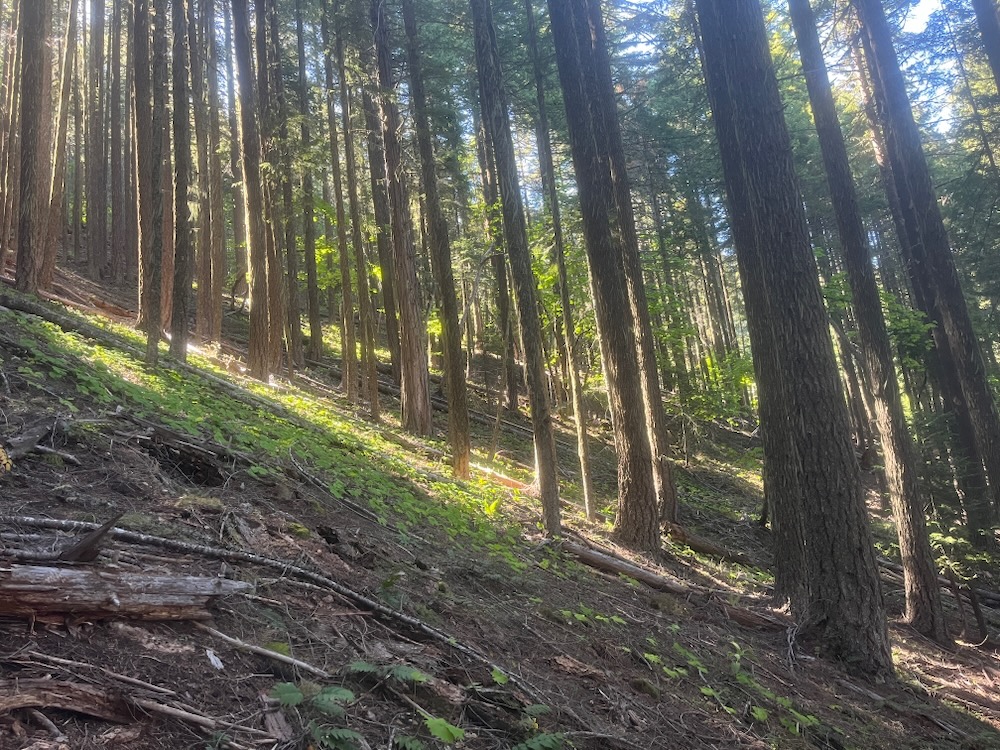
After years of effort working with the BLM to build the Grayback Mountain Trail, the community of Williams is outraged by the agency’s old-growth logging proposal along the trail and on the slopes below. These forests constitute some of the last old-growth forests remaining on BLM lands, and one of the largest blocks of old forest remaining in the area.
To log these forests is unconscionable, and in the era of climate change, profoundly irresponsible. They are treasures in the local community, islands of biodiversity, sources of clean, cold water for downstream watersheds, and by far the most resilient, diverse, and complex forests remaining on BLM lands in the Williams Creek watershed. These are not forests in need of restoration, fuel reduction or timber management, rather they should be managed for their biodiversity, their scenic qualities, and their carbon storage.
ASA has proposed these lands for protection as an expansion of the existing Grayback Glades Research Natural Area (RNA), and as part of a large addition to the Red Buttes Wilderness, including the entire Kangaroo Inventoried Roadless Area and adjacent, unprotected BLM lands.

The BLM has given the public until the end of 2024 to comment on this project. ASA would start by asking that all treatment units proposed in Section 29 and along or adjacent to the Grayback Mountain Trail be canceled, and added to the Grayback Glades RNA.
Glade Creek Units
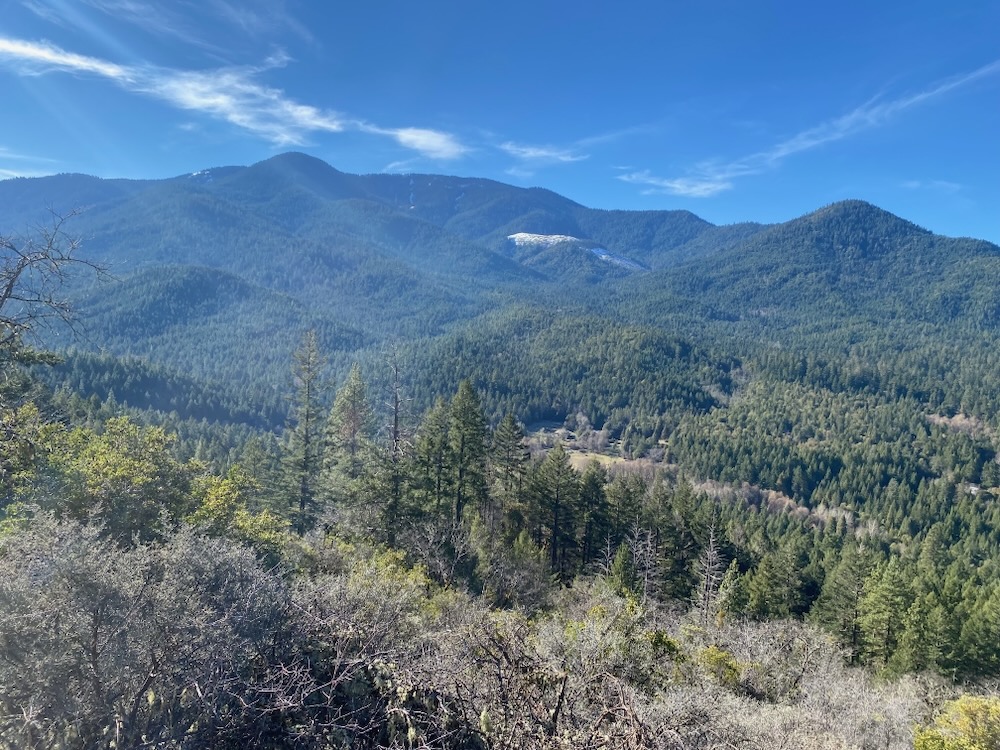
At the headwaters of Glade Creek the BLM has also identified a series of logging units that include unroaded and unlogged forest habitat contiguous with the beautiful old-growth forests on Pipe Fork, the Grayback Glades Research Natural Area, and with the vast Kangaroo Inventoried Roadless Area to the south. Although not technically inventoried as roadless by the BLM, these stands are among the most intact in the Glade Creek watershed and provide connectivity from the Williams area to the wildlands of the Siskiyou Crest.
Starting at roughly 4200′ in elevation, these units extend into montane forest associations containing significant stands of white fir and lush high mountain understory communities. These primary, unlogged forests are foundational to the Glade Creek watershed, and create some of the most important wildlife habitat in the area. Consisting of mature, largely closed forests, they are currently developing naturally into late successional or old growth forests. Patches of mortality have begun generating large diameter snags capable of supporting significant cavity habitat, and large downed trees hold moisture and provide habitat complexity.
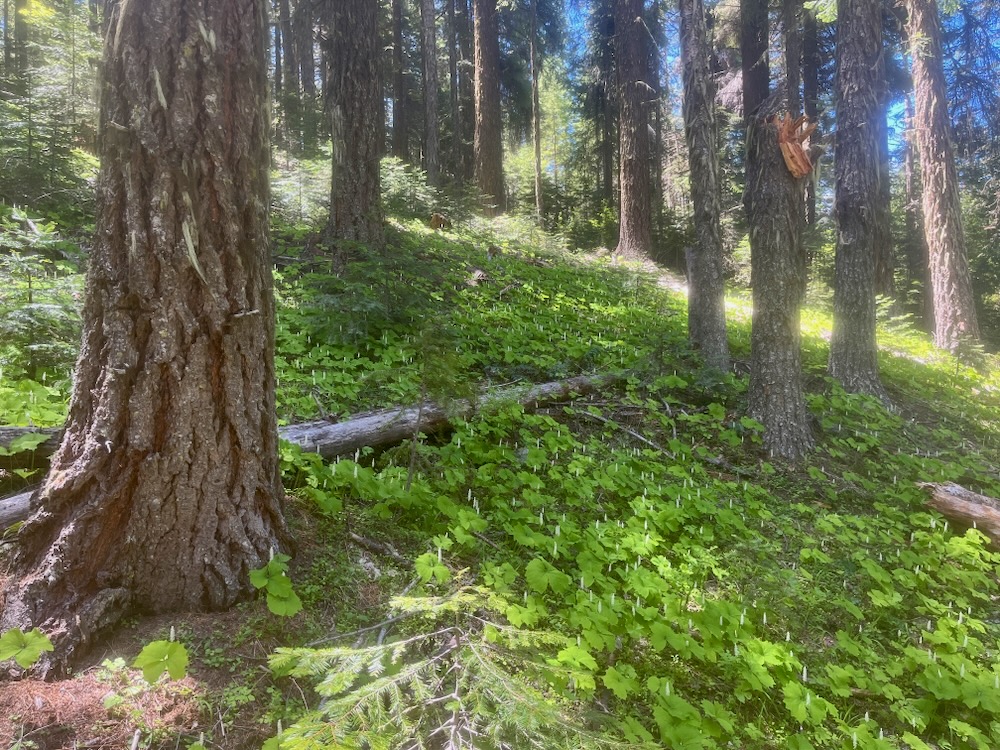
The trajectory of this beautiful forest is towards old-growth conditions and logging provides absolutely no benefit. Not in need of restoration or fuel reduction, we believe these stands deserve protection as part of an expanded Grayback Glades Research Natural Area. We also ask that BLM cancel the large “treatment area” in the southern portion of Section 34 and at the headwaters of Glade Fork. These forests are worth more standing!
Units 34-01, 34-02, & 34-03
The BLM has also begun marking unit boundaries on Glade Creek and has identified three timber sale units including 34-01, 34-02, and 34-03. These units contain a variety of forest and stand conditions, including younger plantation-like stands, high graded forests with dense young stands, and older forests with more complex habitat conditions. Portions of these stands have been heavily logged while others are primary forest with intact biological legacies.
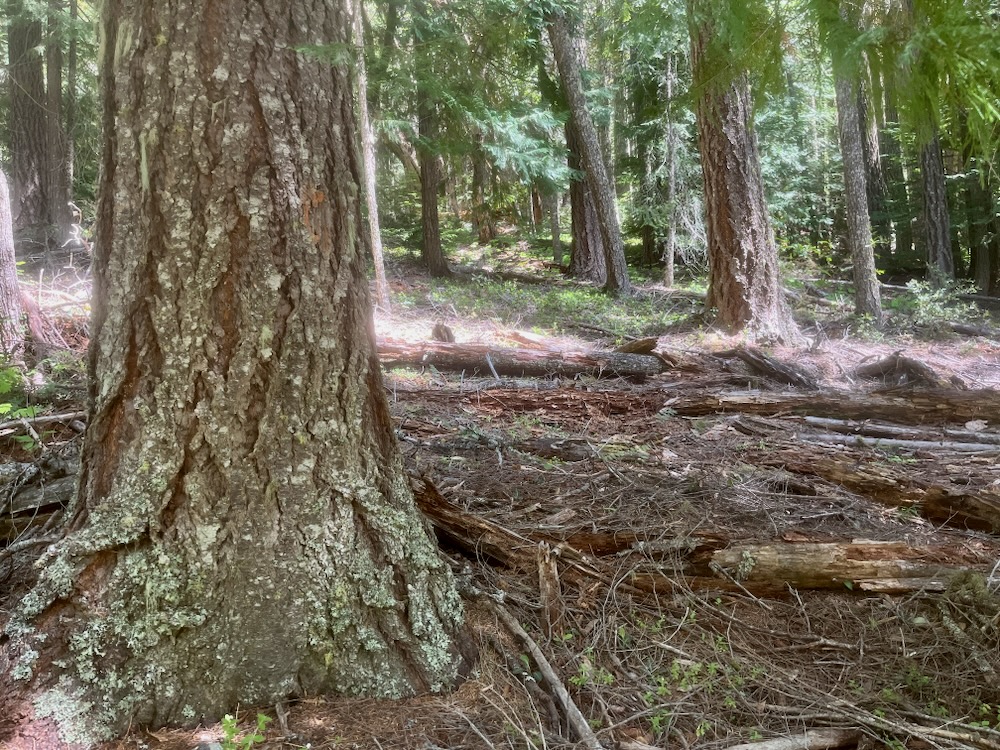
For example, unit 34-03 shows clear signs of historic high severity fire with big fire scarred snags and downed trees. It also supports dominant overstory trees that have regenerated since the last wildfire. The lower end of 34-01 also contains mature and late successional forest and unit 34-02 contains mature forests with stands of Port Orford cedar. These mature stands are in need of protection and should be removed from the timber sale.
Conclusion
Residents in southern Oregon have fought lawless logging on Grayback Mountain and Big Sugarloaf Peak before, and will do so again if necessary. In fact, the Sugarloaf Timber Sale in 1995 kickstarted a series of timber sale protests across the region that became known as the “timber wars.” Enraged by the old-growth logging occurring on public lands, the public at large revolted, occupied National Forest lands, put their bodies on the line, got arrested en mass, and fueled a movement across the West to defend these last old forests. Some of us from ASA were there and remember this controversy well.
In spite of the history, BLM has never moved on or changed its ways, and like clockwork, after the local community and conservation organizations successfully sued on the IVM Project, as well as the Late Mungers and Penn Butte Timber Sales above Williams, BLM came back with yet another controversial old-growth timber sale, this time near our beloved Big Sugarloaf Peak, which many of us have worked hard to protect in the past.
Based on the BLM’s insistence on proposing illegal and highly controversial timber sales, they have been stymied by lawsuits and subjected to multiple rounds of recent protests in the Applegate Valley, including against the Bear Grub and Late Mungers/Penn Butte Timber Sales. They have also recently been subjected to tree sitting actions in the Poor Windy and Rogue Gold Timber Sales. The Medford District BLM appears poised to reopen the wounds still only partially healed after the timber wars of the 1990s by proposing late successional and old-growth logging projects throughout the region.
Steering recklessly towards conflict, the BLM is once again planning to target some of southern Oregon’s most beloved forests and will surely provoke a response. ASA will be working to stop the Cedar Flat Timber Sale and its old-growth logging proposals at the headwaters of Williams Creek and on the lush northern face of Grayback Mountain and Big Sugarloaf Peak. Please join us as we save Grayback Mountain from the BLM’s newest old-growth logging proposal.
For more information: Cedar Flat BLM Eplanning site
Comments are being accepted until the end of 2024. ASA will be providing information to the public as we monitor the timber sale units. We encourage you to comment and will share information throughout the process. Save Grayback Mountain! Stop the Cedar Flat Timber Sale!
